While no one likes to discover that their lawn is suffering from disease, it’s important to catch the warning signs early to keep it from spreading. Our experienced team can help identify any diseases present on your lawn and provide treatment with our professional-grade applications.
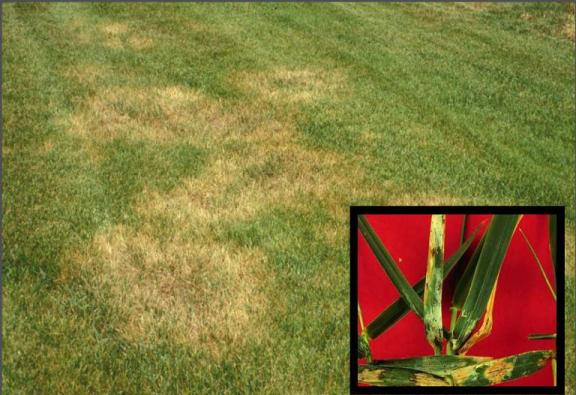
Brown Patch
Season: Mid- to late summer
Appearance: Large, irregular circular areas, up to several feet in diameter, occur throughout the lawn. The patches usually have a brownish to gray discoloration with a water-soaked appearance around the edges. Normally, only the leaves and stems are attacked.
Favorable Conditions: High temperatures (75° to 95° F), heavy or dense thatch, high humidity, lush or weak growth from over fertilizing, and excessive moisture create perfect conditions for this disease to thrive in.
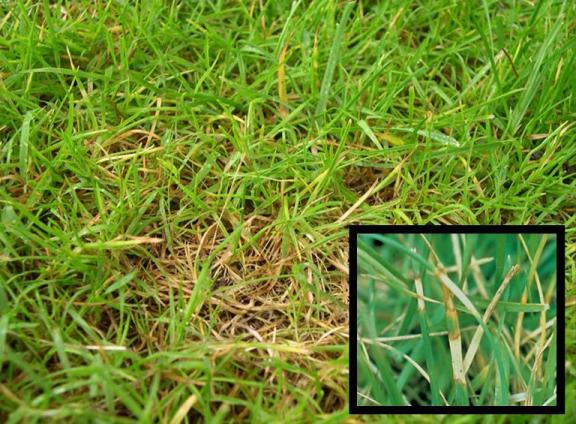
Dollar Spot
Season: The disease occurs from spring through fall and is most active during moist periods of warm days (70-85°F) and cool nights (60°F) in the spring, early summer and fall.
Appearance: Dollar spot symptoms vary depending primarily on turfgrass species, mowing height and nutrition level. Overall appearance of dollar spot on closely mowed bentgrass golf greens differs from that observed on taller Kentucky bluegrass, fine fescue and perennial ryegrass turfs.
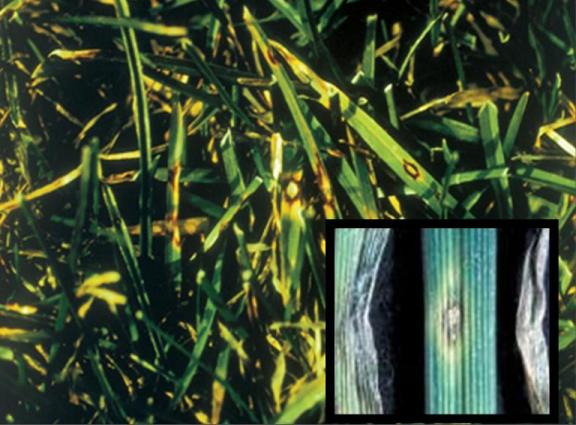
Leaf Spot
Season: Spring to fall
Appearance: The most obvious symptom of this disease is elongated circular spots on the grass blades. These spots have a brown or straw-colored center with black to purplish borders.
Favorable Conditions: Cool (50° to 70° F), moist conditions are most favorable for the growth of leaf spot. The spots first appear on grass in shady areas of the lawn. They occur most commonly during wet, humid weather or in lawns that are often lightly sprinkled or mowed too closely.
Powdery Mildew
Season: Early summer to fall
Appearance: First symptoms are light patches of dusty, white to light gray growth on grass blades, especially during cool, rainy weather. Lowest leaves may become completely covered. Although generally not too serious a problem, it can become severe if not controlled. Heavily afflicted areas look as though they’ve been covered with lime or flour or sprayed with a coat of white paint.
Favorable Conditions: Slow or non-existent air circulation, shade, and high humidity with temperatures of 60° to 70° F.
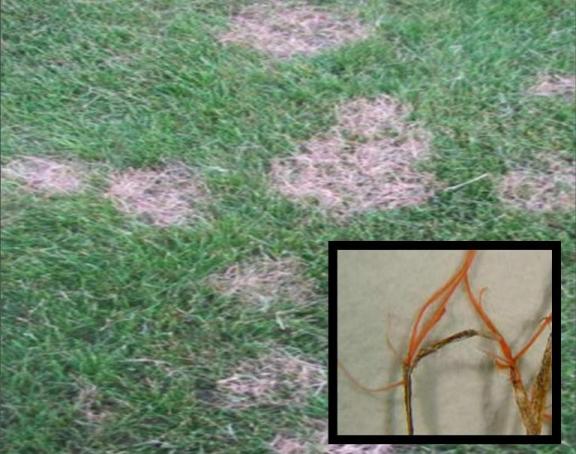
Red Thread
Season: Fall
Appearance: Small spots that appear water-soaked enlarge rapidly to cover a large part of the leaf. As the spots dry, the leaves fade to a light brown or tan. Pink webs bind the grass blades together. Later, the fungus forms thin, red-to-pink, finger-like structures at the tips of grass leaves, which gives the lawn a reddish cast.
Favorable Conditions: Most damaging in spring and fall in temperatures of 68° to 75° F and high humidity. Low levels of nitrogen favor its development. When the grass growth slows down due to a lack of nitrogen, the disease then becomes more prevalent.
Susceptible Grasses: Red fescue, ryegrass, Kentucky bluegrass, and bentgrass.
Resistant Varieties: ‘Biljart’ and ‘Claudia’ fine fescues; ‘Chateau’ Kentucky bluegrass; ‘Pennant’ perennial ryegrass.

Rust
Season: Midsummer to fall
Appearance: The lawn takes on a rust-colored cast, especially noticeable from a distance. Dust-like spores, the main symptom of this disease, form in circular or elongated groups on grass blades. Anything moving through a severely infested area will be covered by the spores and may spread the disease.
Favorable Conditions: Moderately warm, moist weather. Dew that lasts for 10 to 12 hours promotes germination. Stress that restricts growth favors rust.
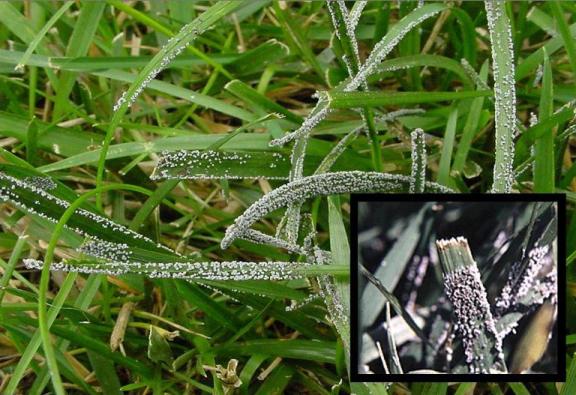
Slime Mold
Season: Occur most often in late spring or summer on all grass types
Appearance: Thin white, yellow or gray layers of slimy paste-like material that cover leaf blades. These masses later dry to form bluish gray, black or white powdery growth on blades. Although they may look alarming, slime molds pose no real harm to your lawn. In most cases it will turn black and disintegrate within in a few days on its own.
Favorable Conditions: Appear most often during several days of cloudy, wet and humid weather. Poor drainage and heavy thatch can also increase the odds of occurrence. Chemical control is not necessary because they will disappear when dry weather returns.

